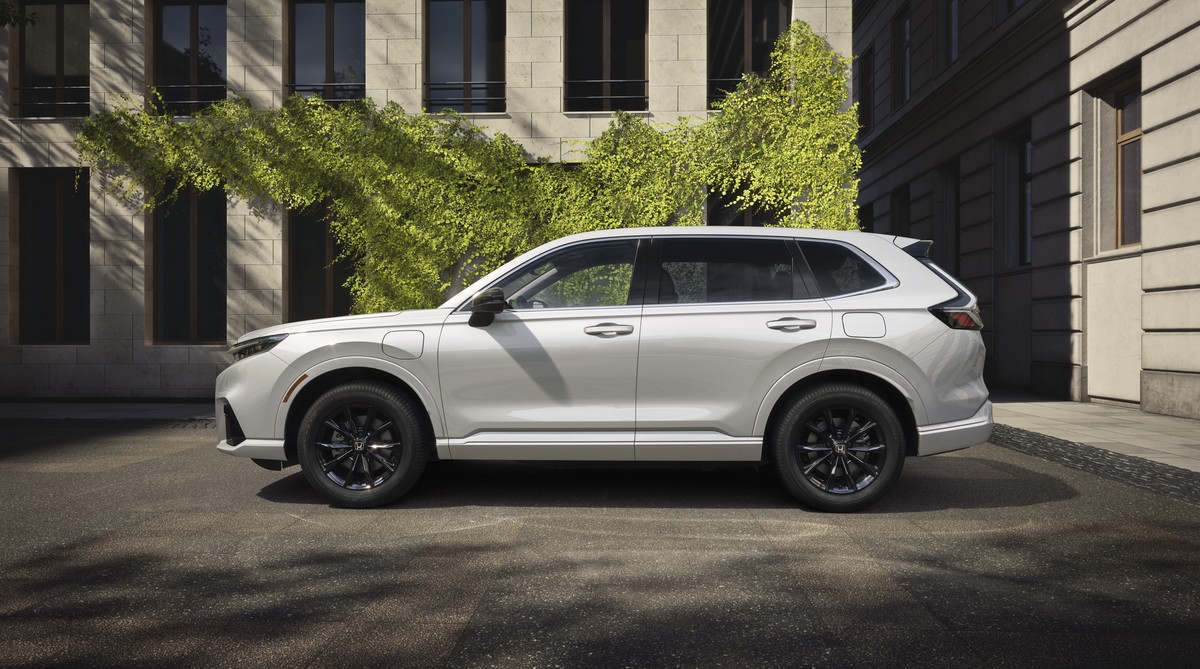
Honda has lifted the covers on its next fuel cell-electric vehicle, the 2025 CR-V e:FCEV, and if the name doesn’t kill it, the automaker might have a limited edition, small-volume hit on its hands.
The hydrogen-electric CR-V replaces the discontinued Honda Clarity FCEV in Honda’s lineup of electrified passenger cars and crossovers. Its complex moniker derives from the decision to make a hydrogen fuel-cell vehicle that can also operate as a grid-charged EV for an estimated 29 miles – making it a plug-in FCEV.
That last bit makes it possible to use the fuel cell-electric CR-V as a traditional electric crossover for most daily driving and when getting to a hydrogen station for a refill is difficult.
The CR-V e:FCEV (for “electric:Fuel-Cell Electric Vehicle”) will be one of just three hydrogen fuel-cell passenger vehicles available in the U.S., alongside Toyota’s Mirai sedan and Hyundai’s Nexo crossover. Neither competitor has a plug for charging from the grid. plug.
California Only
Like the other FCEVs, the plug-in hydrogen CR-V will be available only in California – home to almost all of the retail hydrogen fueling stations in North America.
It will be available by lease only, while both Hyundai and Toyota sell or lease their FCEVs, often at steep discounts.
Honda says the 2025 CR-V e:FCEV will be available “later” this year.
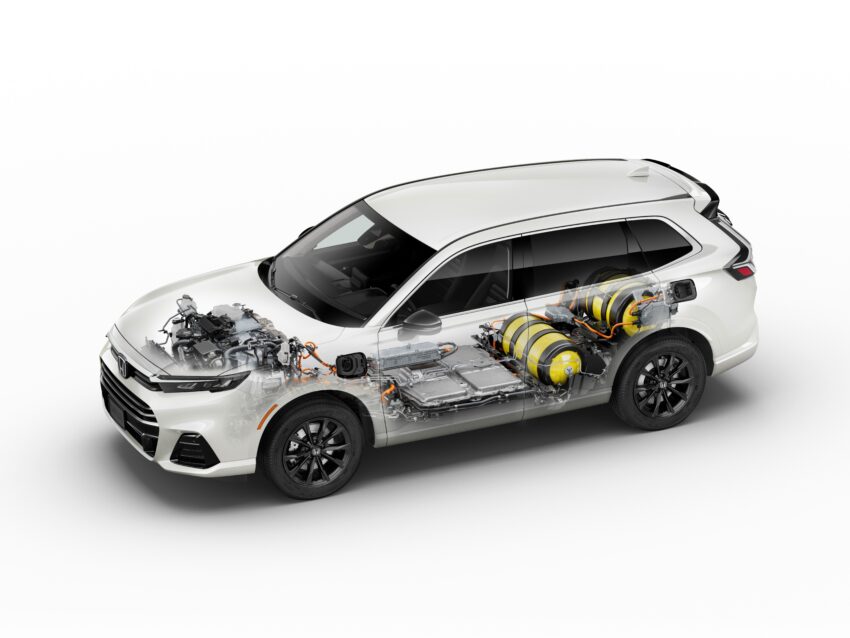
How Much?
Honda hasn’t announced pricing for the plug-in fuel-cell CR-V but has said the fuel cell system – jointly developed with General Motors – cost just a third of what the Clarity FCEV’s fuel cell system cost, so that should pull down the price quite a bit. (The last new Clarity FCEV, in 2021, started at $59,505. The current CR-V (internal combustion) with comparable features as the 2025 plug-in fuel cell model starts at $36,010.)
The Toyota Mirai XLE lists for $51,258 including destination, the Limited for $68,210, and Toyota has authorized a $40,000 discount through March 4 for buyers (not lessees) of the few remaining 2023 Limited models. The company also offers a $22,000 discount on the 2023 XLEs, with no announced cut-off date.
Hyundai’s Nexo lists for $61,470 in the base Blue trim and $64,920 in the Limited trim. No word on discounts to compete with the Mirai, but Hyundai was offering a $33,000 price cut during the Christmas holiday season.
Incentives?
The plug-in hydrogen CR-V is being built at Honda’s manufacturing plant in Marysville, Ohio – the only one of the three passenger FCEVs built in North America.
If Honda decided to sell it, the CR-V e:FCEV it would qualify for a federal tax credit for purchasers of up to $7,500 if its batteries meet all the other criteria for place of manufacture and origin of critical minerals and other materials – a determination not yet made. Because they aren’t made in North American, neither the Nexo nor the Mirai can qualify for a federal tax credit for purchasers.
Leased clean vehicles don’t have to meet those requirements and do qualify for the fuel $7,500, which goes to the leasing companies that actually own the vehicles. Manufacturers’ leasing units usually pass the $7,500 credit on to their customers through lower lease payment.
Like plug-in hydrogen CR-V also will qualify for a variety of California state and local incentives.
What’s Hydrogen Fuel Cost?
While electricity for the grid is fairly cheap, compressed hydrogen clean enough for an FCEV is a low-volume product that’s outrageously expensive – about $36 per kilogram (2.2pounds), the energy equivalent of one gallon of gas.
To override that cost, both Toyota and Hyundai provide buyers and lessees of their FCEVs $15,000 worth of refueling. Honda hasn’t said what it will do, but we expect that, for competitive reasons, it will follow suit.
How Far Will it Go?
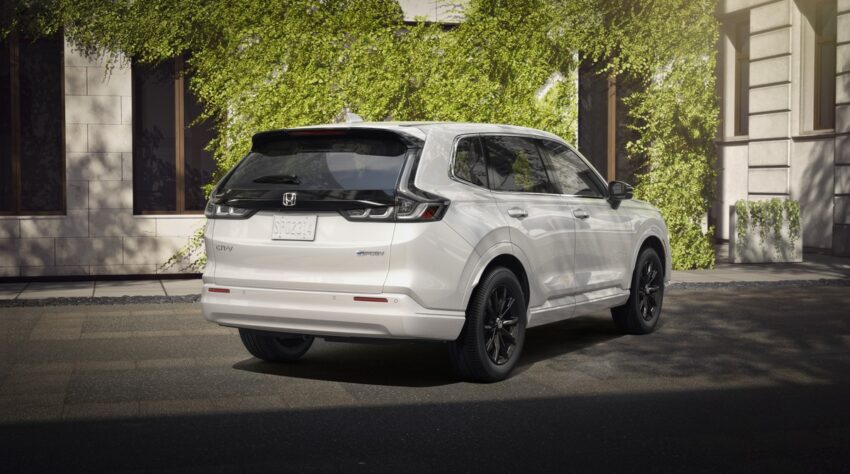
Honda says that the plug-in hydrogen CR-V has received an EPA driving range estimate of 270 miles, including its 29-mile range on battery power from the grid.
That’s not as far as the Mirai (357 to 402 miles, depending on trim level) or Nexo (354 to 380 miles, depending on trim) can travel.
But given the limited supply of hydrogen stations and frequent complaints about down-times at those stations that do exist, the Honda’s 29 miles of travel on electricity from its grid-recharged battery just may make it a lot more palatable to those seeking a zero tailpipe emissions vehicle that doesn’t require lengthy plug-in charging sessions.
FCEV vs EV Refresher
We’ll make this quick, but as fuel-cell vehicles aren’t much in the news, we thought a refresher would be in order.
Electric vehicles, or EVs, use electric motors powered with juice drawn from large battery packs that are charged and recharged by plugging in to the nation’s electricity grid. Power can be obtained at home, work or at a number of public places – hotels, restaurants, theaters and the like, from available 120-volt household sockets or 240-volt EV charging stations. Travelers can also get power for their EVs from the thousands of DC (direct current) fast charging stations installed around the country to facility long-distance EV driving.
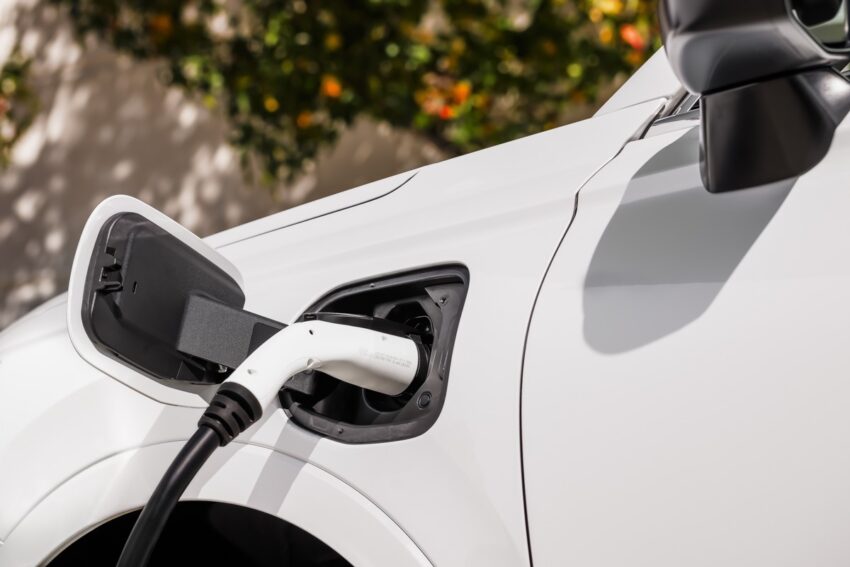
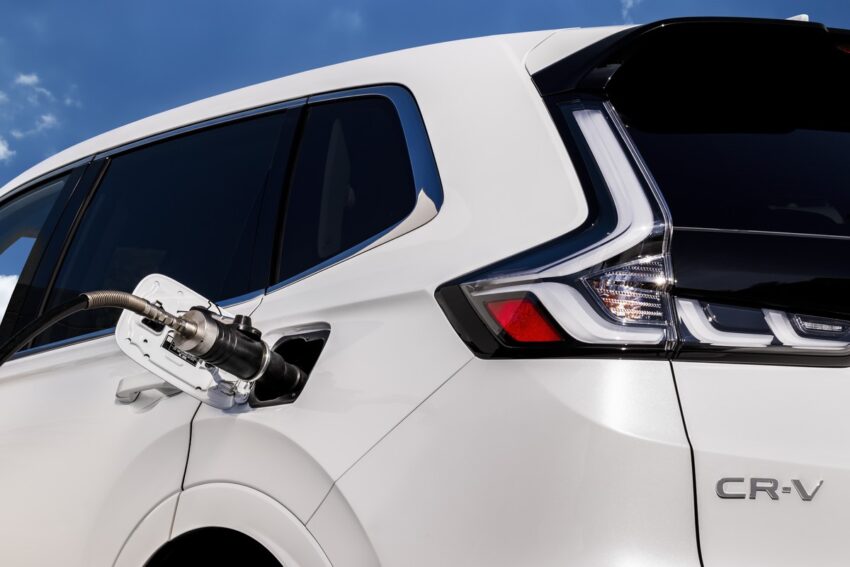
Fuel-cell electric vehicles, or FCEVs, use electric motors powered with juice drawn from smallish battery packs that are fed by an on-board “generator” called a fuel cell stack. The stack makes electricity by stripping the electrons from compressed hydrogen stored on board the vehicle in pressurized tanks. Those tanks must be refilled at hydrogen stations – almost all of which are in California and clustered in the Los Angeles and San Francisco regions.
CR-V e:FCEV Features
First of all, it is a 2025 CR-V and will look just like the internal combustion models inside and out, save for some special badging, two fuel port doors on the driver’s side – one for hydrogen on the rear quarter panel and one for electricity on the front, and a redesigned front end, liftgate and rear fascia. It also gets special 10-spoke, 18-inch alloys in black.
Honda says it will offer the hydrogen-electric CR-V in a single trim level, Touring. Suspension tuning and rear structural rigidity have been tweaked to handle the extra weight of the battery and hydrogen tanks.
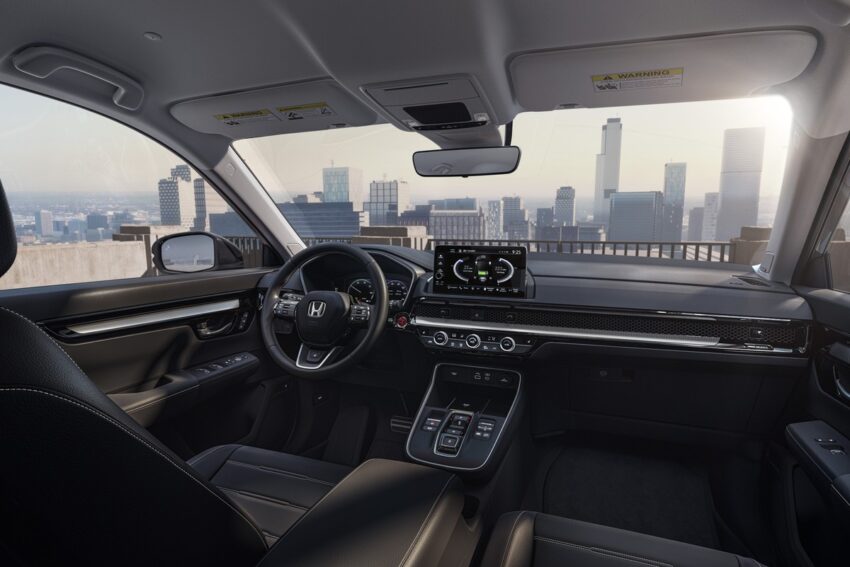
The front-drive system uses a front-mounted electric motor rated at 174 horsepower and 229 pound-feet of torque. The motor is fed by the fuel cell stack and a 17.7 kWh grid-rechargeable battery.
An included power take-off system provides a 110-volt power outlet that can deliver up to 1,500 watts of electricity for running small home appliances, power tools, camping equipment and the like.
The hydrogen-electric CR-V gets a 10.3-inch driver info array and a 9-inch infotainment system touchscreen with a 12-speaker Bose audio system, Wireless Apple CarPlay, Android Auto and smartphone charging are standard, as are power adjustable heated front seats, a heated steering wheel, dual zone climate control, hands-free tailgate, faux leather upholstery and the Honda Sensing suite of advanced safety and driver assist systems, including adaptive cruise control, front collision mitigation, lane keeping assist, and blind spot and rear cross traffic monitors.
